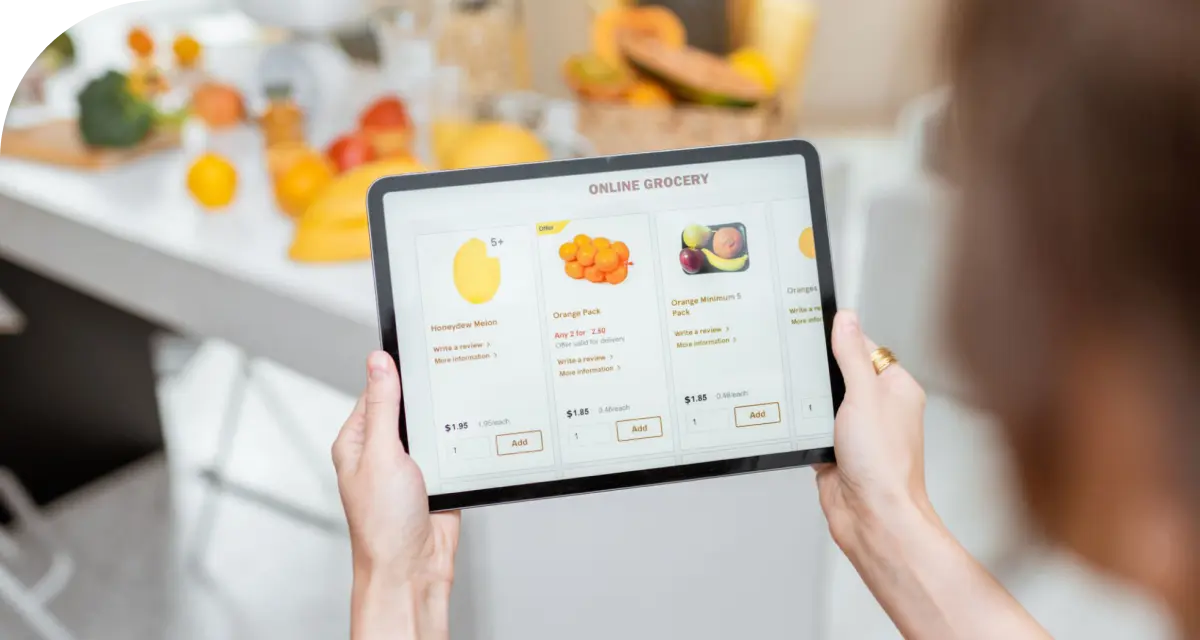Winning With a Digital Shelf Strategy in CPG Ecommerce
A digital shelf strategy is essential for brands competing in CPG ecommerce today.
eCommerce sales in the U.S. are projected to hit $1.7 trillion by 2028, and with this growth comes increased competition.
Brands that fail to optimize their digital shelf risk losing visibility, engagement, and ultimately, sales.
What is a digital shelf strategy?

A digital shelf strategy is how brands manage their products’ online presence across retailers, marketplaces, and direct-to-consumer sites.
It covers everything from product content and pricing to availability and search rankings. The goal is simple: make products easier to find, compare, and buy.
Shoppers today don’t just buy—they research, compare, and engage before making a decision.
A well-executed digital shelf strategy ensures that a brand remains competitive, drives conversions, and builds consumer trust.
Why does a digital shelf strategy matter?
Consumers expect convenience, consistency, and quick access to product information.
A strong CPG ecommerce approach ensures that your products are not just listed online but are actually discoverable and appealing.
Visibility on the digital shelf is what makes or breaks a sale. If a product isn’t optimized for search, has outdated images, or lacks reviews, shoppers move on.
A brand’s ability to manage CPG branding, pricing, and promotions in real time is crucial.
Walmart, for example, is rolling out digital shelf labels to over 2,300 stores, enabling faster price changes and improving efficiency.
According to Grand View Research, the digital shelf label market is expected to grow at 15.8% annually from 2024 to 2030, showing how retailers are investing in tech to stay competitive.
Looking to refine your CPG shopper marketing strategy? Unlock the latest tactics driving in-store and digital retail success. From merchandising to personalization, this guide is your blueprint for staying ahead in a fast-changing landscape.
What is the digital shelf?
The digital shelf is the online version of a store shelf. Instead of physical placement, success depends on product descriptions, images, ratings, and reviews.
A well-optimized digital shelf ensures that a brand’s products are visible, accurately represented, and competitive in price.
For a product to perform well, it must have:
- Strong product content, including detailed descriptions and high-quality images.
- Competitive pricing that reflects market trends.
- High search rankings within retailer platforms.
- Positive ratings and reviews to build consumer trust.
Key parts of a successful digital shelf strategy
Success in CPG ecommerce starts with optimizing product detail pages. Titles, descriptions, and images need to be tailored to retailer requirements and aligned with consumer search behavior.
Search optimization is also crucial. Most shoppers don’t scroll past the first few search results, so ensuring a product appears at the top of the page can make the difference between a sale and a missed opportunity.
Brand consistency across platforms strengthens CPG branding. A product should have the same imagery, messaging, and tone on Amazon, Walmart, and other marketplaces. Discrepancies confuse shoppers and weaken brand trust.
How to build your digital shelf strategy
Start by auditing your current digital shelf. Identify gaps in product content, pricing, and availability. Ensure descriptions are accurate and include relevant keywords.
High-quality images, videos, and 360-degree views can improve engagement.
Data plays a major role in refining a digital shelf strategy. Leveraging CPG analytics helps brands monitor trends, track competitor pricing, and adjust promotions based on real-time insights.
Retail media investments, such as paid search and sponsored listings, can further boost visibility.
Measuring success and improving your digital shelf strategy
Tracking performance is key to long-term success. Metrics like conversion rate, search share, and click-through rate provide insight into how well a product is performing.
Analyzing customer reviews can reveal areas for improvement, while competitive benchmarking helps brands stay ahead in the market.
FAQs
A successful digital shelf strategy depends on maintaining consistent, optimized product content across all eCommerce platforms. This includes high-quality images, keyword-rich product titles, accurate descriptions, and real-time inventory visibility. Brands must also monitor search performance, product reviews, and price changes. The digital shelf is competitive, so staying visible requires ongoing refinement based on platform algorithms and consumer behavior insights.
To maintain consistency and visibility, brands should use centralized content management systems that sync across all retailers. Tools that track content accuracy, image updates, and pricing across multiple channels are essential. Frequent auditing is necessary to identify content gaps, pricing discrepancies, or missing keywords that could impact performance. Ensuring content freshness and alignment with platform-specific best practices can significantly improve product discoverability.
Key metrics include share of search, digital shelf presence, product availability, conversion rate, pricing compliance, and customer ratings. These indicators reflect how easily products can be found, how well they perform once discovered, and whether the brand is maintaining competitive parity. By focusing on these metrics, brands can diagnose gaps in performance and prioritize actions that lead to higher online sales.
Wrapping it up
A strong digital shelf strategy isn’t just about getting products listed—it’s about making them visible, engaging, and competitive.
Brands that invest in CPG analytics, optimize content, and monitor market trends can significantly improve their CPG ecommerce performance.
The future of the digital shelf is evolving with AI-driven insights, dynamic pricing, and deeper personalization.
Brands that stay ahead of these trends will not only maintain relevance but also drive stronger sales and consumer loyalty.
Optimizing for the digital shelf is no longer optional—it’s a must for any brand looking to thrive in today’s CPG shopper marketing environment.




